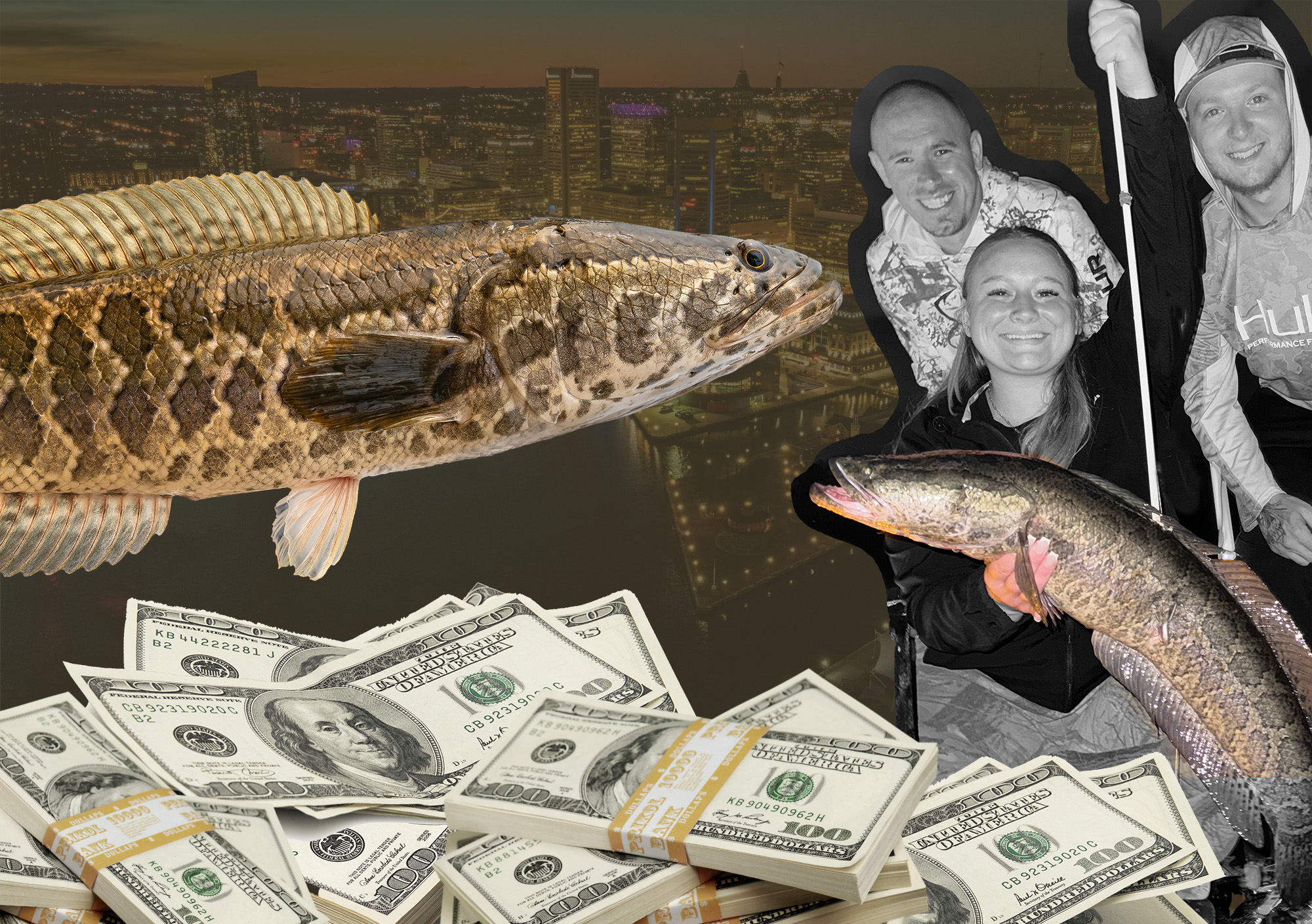Parts of Maryland’s Chesapeake Bay are loaded with invasive fish species — most notably snakeheads, which were introduced illegally into Maryland waters some 20 years ago and have been vilified by fisheries biologists and in the media ever since. The sprawling tidewater in the Baltimore Harbor area is also home to overpopulations of blue and flathead catfish, both of which have expanded their range into the bay and are eating their way through the native food chain.
To help solve the bay’s invasive fish problem, a bounty reward program has been established to encourage harvest. A coalition of local conservation groups established the “Reel Rewards” fish program in 2024, and it pays anglers $30 for every snakehead, blue, and flathead they catch in the harbor. Fishermen can use rods and reels or bows, and they can cash in their fish at pickup locations around the area. The heads are kept there, while anglers can take the rest of the fish home to eat.
Read Next: How to Catch Snakeheads
The program is currently limited to the Baltimore Harbor area of the Petapsco River, and anglers can turn in up to 15 fish per week. But there is no cap on the overall number of fish, and some local fishermen are making hay while they can. Last year, 26-year-old Brian Slacum made around $4,000 turning in 134 snakeheads. He had plenty of fish to eat, too.
“Snakeheads are excellent eating,” he tells Outdoor Life. “I like them better than striped bass, and Baltimore Harbor is jammed with them. They are literally everywhere in shallow water these days, spawning I think.”
Slacum and his bowfishing buddy, Chris Taylor, are at it again this spring. They’re already on track to surpass their 2024 haul.
“We’ve logged 106 fish this year, and the season runs into mid-July,” Slacum says. “We arrowed 65 fish one night this year. Most weigh under 5 pounds, but we see fish to 10 pounds, and our biggest was 15 pounds.”
Slacum uses a bow with a relatively light draw weight of just 35 pounds. It’s plenty powerful for bowfishing, and he says it keeps them from driving an arrow too far into the mud if they miss a fish, making it easier to retrieve.
Most of the snakeheads the bowfishermen see are lone females cruising the shallows. But they’ll occasionally find four or more fish jammed together.
Slacum sees other bowfisherman on the water going after bounties, and he believes anglers are putting a dent in Maryland’s invasive fish population. But he says the Baltimore harbor is still a “target-rich” environment, and he and Taylor will regularly see up to 60 fish in a four-hour trip.
Archers prefer low, outgoing tidewater, since targeting water just a foot deep has been the most productive, says Slacum. They bowfish from a shallow-draft Tracker Marine boat, set up with underwater lights and a raised platform for shooting.

Read Next: The Best Snakehead Lures
“We still get stuck on mud flats sometimes, but we can usually work our way off them,” Slacum says.
He says he’s been amazed at how adaptable snakeheads are. He’s arrowed fish in freshwater, tidewater creeks, and in the saltwater near the massive Chesapeake Bay Bridge. The way Slacum sees it, getting paid to harvest these fish helps everyone. Scientists keep the heads for analysis and data collection, the bay’s striped bass and other native fish have fewer nonative predators to worry about, and anglers have an even bigger incentive to get out on the water.
Read the full article here




